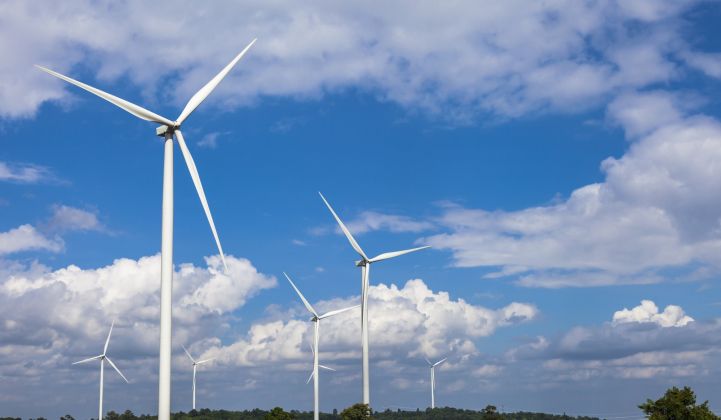While the U.S. wind energy installation outlook looks bright — more than 23 gigawatts in new capacity forecast over the next two years — looming unforeseen supply chain bottlenecks could lead to project cancellations and postponements. This could put as much as $2.1 billion of revenue at risk, according to a new study by Wood Mackenzie Power & Renewables.
“Between 2019 and 2020, we anticipate strong growth in wind energy installations as the industry rushes to meet deadlines for U.S. Production Tax Credits (PTCs)," said Dan Shreve, head of global wind research at Wood Mackenzie Power & Renewables. “However, increased demand for transportation capacity due to growth in partial repowering activity, logistics requirements, and competition from other industrial sectors could severely hamper the transportation segment’s ability to ship components."
Shreve added: “These supply chain constraints will escalate deployment risks for all wind energy participants — increasing the likelihood of higher costs, missed deadlines, lost production, and fewer PTCs if projects can’t be commissioned in time.”
U.S. Wind Capacity Installations, 2010-2020E*

Source: Wood Mackenzie power & Renewables (NOTE: Forecast estimates reflect the Q2 2018 Market Outlook Update)
According to the analysis, if these supply chain constraint issues are not addressed, more than 23 percent of the wind energy capacity installations expected in 2019-2020 could be delayed or canceled.
Moreover, turbine installations could decline by 1.1 gigawatts — 366 megawatts in 2019, 720 megawatts in 2020 — representing a loss of more than $800 million in turbine sales. PTC impacts, while more complex to estimate, could represent lost revenue of up to $1.3 billion over the 10-year tax credit period.
“While we've seen upticks in demand put pressure on transportation capacity in the past, the total level of effort required from logistics providers this time around will be substantially higher than during past peaks,” said Shreve. “New turbine technology is producing higher-capacity turbines, but this results in further strain on the supply chain, as components are larger and heavier, and more component shipments are needed per turbine. This in turn increases requirements for highway escorts, reduces transportation equipment cycle times, and increases demand for larger cranes.”
Although large players in the wind industry are preparing for rapid growth in 2019-2020, many have not anticipated the magnitude of these supply chain constraints and the losses they can cause. Unavoidable project cancellations and postponements will be difficult to absorb and can lead to knock-on declines in activity for a wide range of smaller players, as well as the local economies and work forces they support.
Aggressive increases in equipment transportation turnaround times, combined with levelization of demand to increase equipment use during off-peak periods, will be required to reduce or eliminate the demand shortfall and erase the $2.1 billion revenue at risk.
The report, commissioned by the Wind Energy Logistics Group — an organization made up of participants from 16 key companies across the wind energy supply chain, including major equipment manufacturers, transport and logistics companies, and wind energy developers and installers — outlines the following collaborative actions that can help close the gap:
- Shift installation schedules and transport deliveries to minimize quarterly peaks
- Establish forward storage sites to pre-position component inventories near wind farms
- Prepare transload and wind farm sites to accept early deliveries
- Prioritize shipments to the most efficient sites and wind farms
- Communicate these findings and develop action plans now
“Aggressive action by supply chain participants is needed now to solve this impending supply/demand gap and reduce or eliminate the demand shortfall and the $2.1 billion revenue at risk,” said Shreve. ”A different mode of operation will be essential in 2019 and 2020, requiring an immediate and broad-based collaborative effort.”
”The industry should also seek public policy relief to allow PTC extensions to 2021 and beyond, which would support the wind energy industry’s efforts," he added.
The executive summary of the report is available here.




